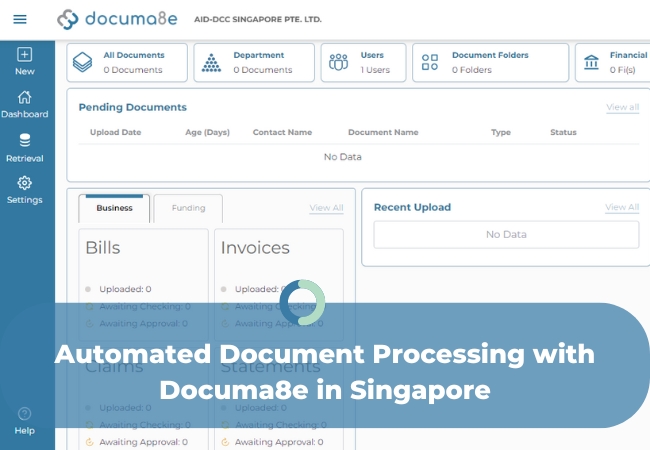In today’s fast-paced business environment, efficient data extraction from various documents is paramount. Singapore-based AI-powered solution, Documa8e, emerges as a leader in corporate document extraction, scanning, classification, and more. This article aims to guide businesses in choosing the right document processing software, exploring key considerations and providing insights into the role of Documa8e in this landscape.
Automated Data Extraction:
Data extraction involves transforming unstructured or semi-structured data into meaningful, structured information. Automated data extraction, a crucial aspect of document processing, eliminates manual intervention. Documa8e employs a pipeline approach, encompassing Data Preprocessing, Data Extraction, and Data Validation, ensuring high accuracy and automation.
Understanding Document Types:
Documents, categorized as structured, semi-structured, or unstructured, pose different challenges for data extraction. Structured documents, such as forms, exhibit consistent formatting. Semi-structured documents, like invoices, present fixed data with varied formats. Unstructured documents, like emails, lack a specific layout. Documa8e adeptly handles these diverse document types.
Data Extraction Solutions:
Documa8e offers two main approaches for data extraction: Rule-based and AI/ML-based solutions. Rule-based extraction relies on predefined patterns, suitable for structured documents. In contrast, AI/ML-based extraction leverages OCR and advances in artificial intelligence, excelling in extracting data from semi-structured and unstructured documents.
Choosing the Right Document Processing Software:
To guide businesses in selecting an automated document processing software, a step-by-step process is outlined:
Step 1 – Define the Scale of the Problem: Consider the number and types of documents, along with the required STP (Straight Through Processing) metric. Documa8e’s scalable architecture ensures flexibility and accommodates increasing document volumes.
Step 2 – Automatic Classification of Document Types: Documa8e’s ability to classify documents based on content and type ensures efficient organization, especially when dealing with multiple document types.
Step 3 – Check for STP Metric: Evaluate the STP rate to gauge the accuracy of the data extraction solution. Documa8e emphasizes the importance of high accuracy, directly correlating with STP.
Step 4 – Decide if You Need a Custom Data Extraction Solution: Documa8e offers generic solutions for various document types and the ability to create custom solutions for unique needs, ensuring adaptability and accuracy.
Step 5 – Analyze the Cost and ROI of the Project: Consider factors such as volume, complexity, and automation level when assessing the project’s cost and ROI. Documa8e emphasizes the long-term benefits of automated document processing.
Quick Checklist for Document Processing Software:
To ensure businesses choose the right document processing software, a checklist includes considerations such as categorical identification, flexibility in formats, speed and accuracy, adaptability, independence from third-party applications, secure storage and backup, security features, integration capabilities, and intelligent data capture.
Conclusion:
Automating data extraction brings substantial benefits to businesses. Documa8e, with its commitment to high accuracy, speed, and seamless document handling, stands as a reliable solution. By following the outlined guide and leveraging Documa8e’s capabilities, businesses can achieve optimal results in document processing. Enjoy a 3-Months Free Trial with Documa8e to experience smart and efficient document processing firsthand.
